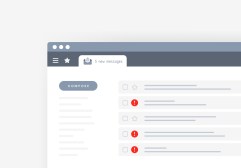Top 5 Strategies for Implementing Smooth Operational Workflows
In today’s fast-paced business environment, having efficient operational workflows is crucial for success. Whether you’re managing a small startup or a large corporation, understanding the fundamentals of setting up operational workflows can significantly enhance productivity and streamline processes. In this article, we will explore the top five strategies to help you implement smooth operational workflows in your organization.
Define Clear Objectives
Before diving into workflow creation, it’s essential to define clear and measurable objectives. What do you want to achieve? Whether it’s reducing turnaround time or improving customer satisfaction, having specific goals helps in designing workflows that align with your organization’s mission. Make sure to involve team members in this process so that everyone understands their roles and responsibilities.

Map Out Your Current Processes
Mapping out existing processes gives you a comprehensive view of how work currently flows through your organization. Use flowcharts or diagrams to visualize each step involved in your operations. This mapping will help identify bottlenecks or redundancies that need to be addressed before implementing new workflows.
Leverage Technology Tools
Incorporating technology can greatly enhance the efficiency of your operational workflows. Utilize project management tools, automation software, and communication platforms that best fit your organization’s needs. These tools can help streamline tasks, improve collaboration among teams, and provide real-time updates on project statuses.
Foster Team Collaboration
Smooth operational workflows depend on effective collaboration among team members. Encourage open communication and collaboration by creating an inclusive environment where feedback is valued. Regular team meetings can ensure everyone is on the same page and allow for adjustments based on collective insights.
Continually Review and Optimize Workflows
Once new workflows are implemented, it’s vital to regularly review their effectiveness through key performance indicators (KPIs). Gather feedback from employees who are directly involved in these processes to identify areas for improvement continuously. Remember that optimization is an ongoing process; stay flexible and willing to make changes as needed.
By applying these top five strategies for implementing smooth operational workflows, you’ll be well on your way to enhancing productivity within your organization while minimizing inefficiencies. A strong foundation based on clearly defined objectives, thorough mapping of processes, technology utilization, team collaboration, and continuous optimization will lead you toward long-term success.
This text was generated using a large language model, and select text has been reviewed and moderated for purposes such as readability.











